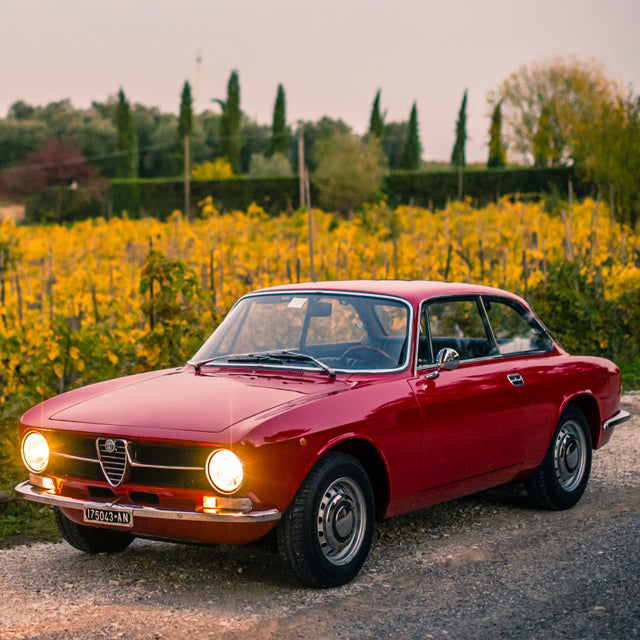There’s a feeling of grace and sportsmanship that only few cars can give to you. The bonnet pointing downwards, ending in wraparound windshield, the roof above it starts from its highest point, then an accentuated descent until the rear window. The tail, like a boat, ends up lower and narrower than the front bonnet.




Visually, it sits on its tail, an effect that usually makes a car not so sporty. Not in this case. Better still, its interior is as good-looking as its exterior.
The driving position is very different from what we are used on modern cars. Now, we drive with the steering wheel quite far, with the arms stretched out. We immediately see that the car is built around the driver, with the two major instruments, speedometer and tachometer, in front of us.
In my opinion, they’re the most beautiful gauges ever made. Embedded in the two humps of the dashboard, with white text, clean, and basic. It reminds me of the Omega Speedmaster, the sports watch from the time of GT Junior that accompanied the astronauts in space. In front of the gearbox, at the bottom of the dashboard, the indicators of fuel level and water temperature are visible, both oriented toward the driver’s seat.
Everything seems under control, with nothing to do but to enjoy driving. Damian is the lucky owner of this GT Junior, and he seems to agree with me about my feelings for this beautiful Alfa.




It’s a 1300 GT Junior from 1971, the year of the third series. The front is the same as that of the GT 1750 Veloce from 1967, except for the number of the front headlights. Compared to previous series, its headlights are farther apart, taken to the extreme of the “mask”, the indicators are placed under, instead of next to the headlights.
As you may imagine, even in Italy, Damian tells me how hard it was to find an exemplary in very good condition. Many mechanically-minded enthusiasts viewed the rising prices and bought scrap examples of the Giulia, have them prettied, and sold at a high price. His is atypical: a beautiful specimen that was completely restored in 1995, and is still in its original specification.
The only thing that differs is the beautiful wooden steering wheel, which only makes the car even more lovely to drive. Sadly, though, it is the time to say goodbye to Damian. The unmistakable roar of its DOHC engine fades in the distance, and I miss it already.
This is a shortened version of the original story run on car-shooters.com. Besides finding the full story on this car on its website, you can stay up-to-date with Car-Shooters on Instagram as well.
































































